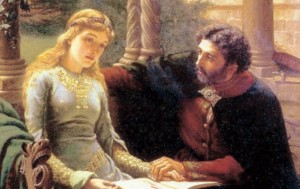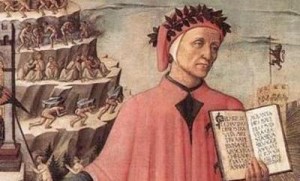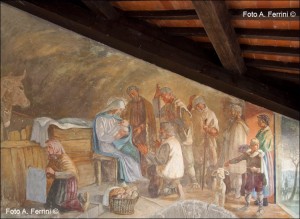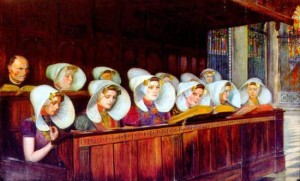Love is timeless. Literature and mythology they narrated by many ardent passions among pairs of lovers, But what we tell you today is a different story, particular. This is, In fact, one of the few love stories that have a historical Foundation as a stage, come down to us thanks to a series of letters that the two lovers exchanged when they were forced to divide their streets.
But proceed in order. We in France, Paris, early 12th century. The protagonists are Abelardo, an internationally renowned theologian and cleric, and Heloise, a cultured and intelligent young woman.
The history between the two began in 1116, When Heloise's uncle decides to give the city's most coveted master with grandson, Abelardo. Soon the lessons are transformed into real events, during which time instead of dealing with culture and erudition lovers are devoted to each other, discovering ultimately to love intensely, as you will recall just a few years after Heloise in one of his letters:
“Those pleasures which we both totally dedicated ourselves when we were lovers, they were so sweet to me that I can only regret this, or they may fade from my memory, not even a little. […] These visions I save even when I sleep. Even during the solemnity of the mass, When the prayer must be the purest, the obscene images of those miserable soul took possession of my enjoyment to the point that I think more sensual pleasures to prayer”.
When Heloise realizes she is pregnant Abelardo decides to take her with him in Britain, where will their child Astrolabe. Moved by love, Abelardo marries companion, aware that if this news was leaked he would put at risk its reputation, but above all, would sacrifice the work and studies of a lifetime. Unfortunately the fact soon became public knowledge, and to prevent further scandal the theologian does hide his wife in a monastery. Eloisa's relatives do not understand though this gesture, and they believe that Abelard is attempting to permanently get rid of newly constructed family in order not to lose its reputation. Decide so to take an extreme Act: overnight does emasculate by three gunmen on poor Abelard.
From that moment on, Peter Abelard and heloïse don't meet more, but begin to write, Lucky for us, passionate letters of theological and philosophical content, occasionally dotted with sweet memories of the past. The figure of Eloisa is what surprises us most: took the veil at the monastery that had taken refuge, subtle and sophisticated words tries to regain her husband's love, maybe never came minus, but surely weakened after serious accident. It reminds him of what he had in his own letters boost love him thus boldly:
“Who among the Kings and philosophers could match your fame? Which region, or city, or country was burning to see you? Chi, I ask you, When you walked among the people, not ran for look? And when you went, who didn't try to follow you with our eyes, straining my neck and turning your eyes? Which bride, which Virgin, you wished ardently if I were absent and, If you were there, not blushed? As the Queen or noble woman envied my joys and my bed?”.
Eloisa efforts are however rooms: Abelardo is very strict with his wife, inviting you to devote himself body and soul to the service of God only, While aware of the fact that the veil worn by Eloisa wasn't for vocation but to need.
The love that had tied the two lovers, through the correspondence, goes by sublimating into something that is beyond mere carnal passion to become love of language, love of the intellect, absolute love.
Today, nine centuries after their romance, Abelard and Heloise resting together at the monumental cemetery Pere-Lachaise, in Paris. Finally can be together for eternity.
Maria



